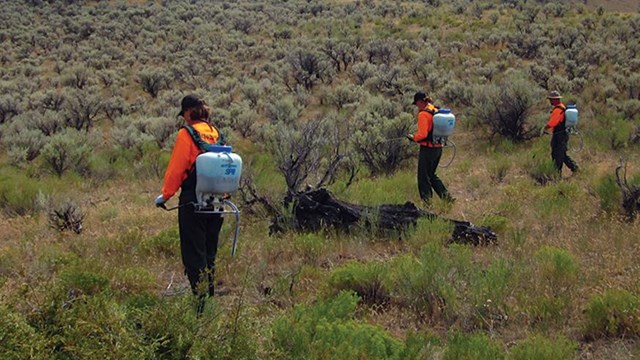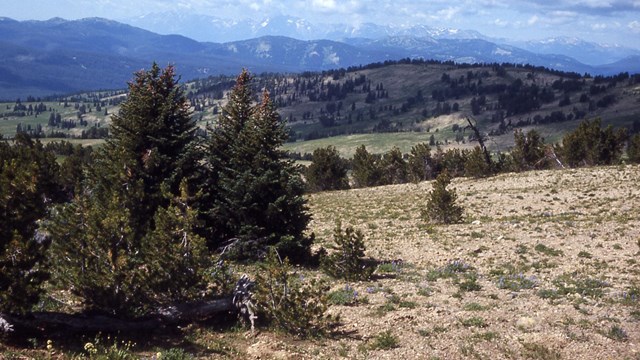
NPS In 1932, President Hoover added more than 7,000 acres of land to Yellowstone National Park to provide low-elevation winter wildlife habitat near Gardiner, Montana. The addition included 700 acres of irrigated agricultural fields. Park managers stopped irrigating the fields and planted an nonnative perennial grass, crested wheatgrass (Agropyron cristatum), that they hoped would tolerate the arid conditions and provide wildlife forage. It thrived for many decades, but was never suitable forage. Eventually another, more aggressive, nonnative plant—an annual mustard, desert alyssum (Alyssum desertorum)—moved in. Alyssum germinates very early and uses up most of the soil moisture before other species even get started. It also exudes a chemical that inhibits soil bacteria needed by native plants. Park managers are restoring native vegetation to this area, following recommendations of arid land restoration specialists. In 2008 and 2009, they fenced four pilot plots totaling 50 acres, where they are controlling nonnative plants with herbicides and growing cover crops to increase soil organic matter and moisture-holding capacity and to restore soil microbial communities. Since 2014, the areas 168 Yellowstone Resources and Issues Handbook, 2020 VEGETATION within the fences, as well as some areas outside of the fencing, have been drill and broadcast seeded with a mix of native grasses and forbs. Spot-spraying with herbicides in the seeded areas will continue to help the native species establish. In 2019, fences closest to the north boundary of the park were removed to allow wildlife to have access to the restored areas. The plan is to remove the remaining fences in the next few years. Restoration of native plants will continue in the Gardiner Basin without the use of exclosure fencing. Future restoration efforts will follow a “broadcast herbicide-plant native seed-spot treat with herbicide” method, but will not exclude wildlife during this process. In 2019, additional acres north of Landslide Creek were treated using this method. 
Invasive Plants
Invasive plants can displace native plant species, change vegetation communities, affect fire frequency, impact wildlife. 
Vegetation & Resources Management Branch
Park employees who inventory, monitor, manage, and research the vast array of plant communities in the park. 
Plants
Yellowstone's plants include species typical of the Rocky Mountains, the Great Plains, and the Intermountain region. |
Last updated: April 18, 2025
